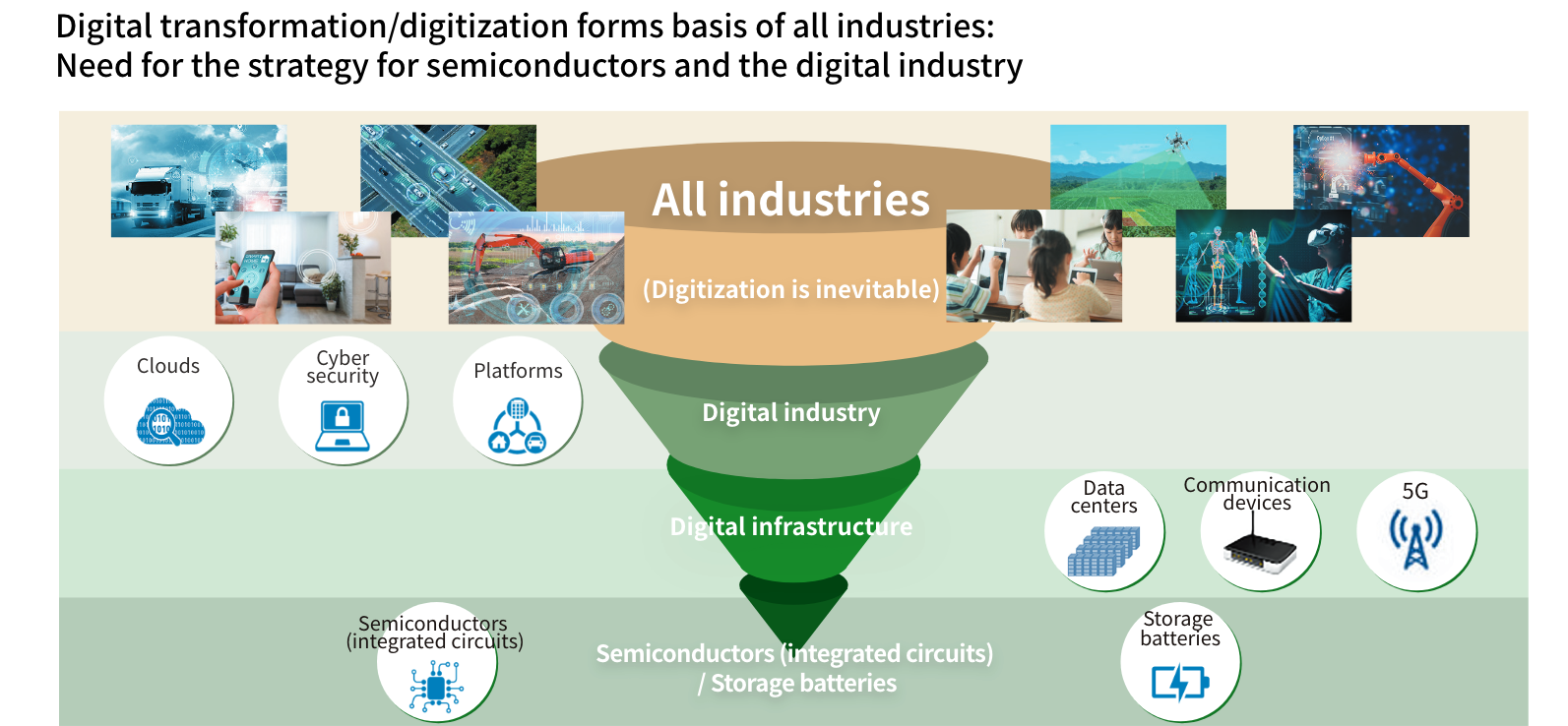
Project Overview
Increasingly electrified and digitalized society can realize Carbon Neutrality in all fields including manufacturing, services, transportation, and infrastructure. Therefore, the semiconductor/information and communication industries, as a foundation for digitization and electrification, are the key to advancing green and digital initiatives at the same time.
Power semiconductors are used to control various electrical products related to everyday life, such as automobiles and industrial equipment, electric power generation and railways, and home appliances.
To realize a carbon-neutral society, the energy efficiency of such electric devices is extremely important. Demand is expected to increase with the development of electric and digital technologies in the following areas:
1. Medium-capacity electric vehicles, 2. Large-capacity renewable energy power generation systems, and 3. Power supplies for small-capacity data centers.
Digitalization is causing a rapid increase in data flows (at an annual rate of approximately 30%), resulting in a steady expansion in the market for data center servers. Because of this rapid increase in large-scale data centers, power consumption for all data centers is expected to increase, and the current pace of technological evolution will not be able to keep pace with increases in power consumption.
In the current method (cloud computing), large amounts of data are sent from each device (edge terminal) to the cloud via the network. This causes the network load to increase as the amount of data increases. If we continue to use this method, there is the possibility that data processing on the cloud may overflow.
Therefore, this project aims to develop next-generation green power semiconductors, develop next-generation green data center technology, and build IoT sensing platforms by 2030.

Project Features
〇 Development of next-generation green power semiconductor technology
Focusing on power semiconductors, which are the key to power conservation, we will work on (1) the development of innovative devices and modules using compound materials (SiC, GaN) and (2) the development of large-diameter SiC wafers. The aim of this project is to develop next-generation power semiconductors that achieve higher performance, higher efficiency, and lower costs, thereby reducing the power loss by more than 50% and achieving similar cost levels to those of Si power semiconductors.
〇 Development of next-generation green data center technology
Through innovative photonics-electronics convergence technology that converts electrical wiring in servers to optical wiring, etc., we aim to achieve energy savings of 40% or more, compared with existing data centers in FY2021.
〇 Construction of an IoT sensing platform
By building an IoT sensing platform that is easily utilized by a variety of companies related to fields such as hardware, software, system vendors, and users, and by developing edge computing technology based on this platform, we aim to reduce the power consumption of the entire system by 40%.